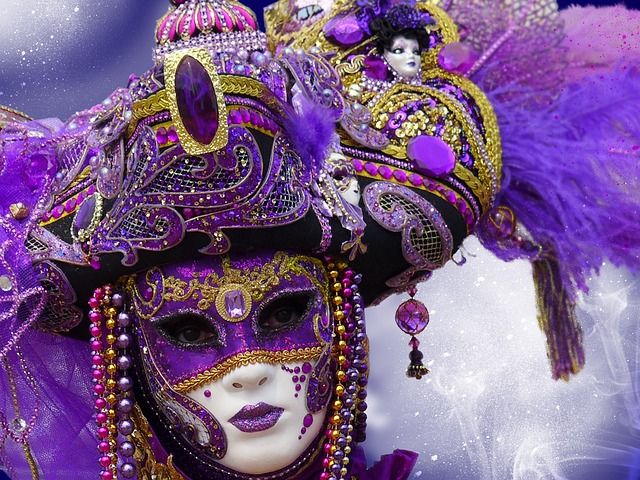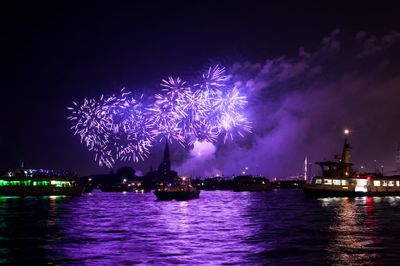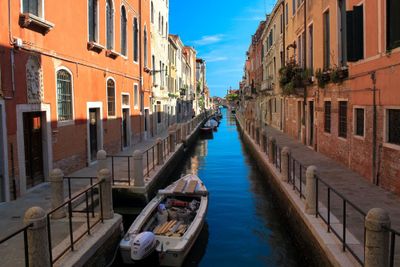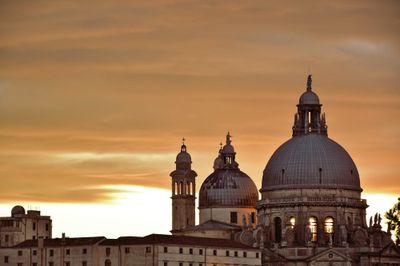The Venice carnival costumes and masks are so elaborate and beautiful that they are an integral part of the festivities.
Whether you're planning a trip to Venice or just want to learn more about this unique and fascinating cultural event, this article will provide an in-depth look at the history of masks and at the uniqueness of each character.
From the origins of the festivities to the modern-day celebrations, we'll explore the cultural and historical significance of the Venetian masks and costumes that have made the Carnival such a beloved tradition.
Summary:
- Venice Carnival costumes and masks: the history of this rich tradition
- Current state of the Venice Carnival costumes and characters
- If you'd like to rent Venice Carnival costumes, have a look at our tips
Venice Carnival costumes and masks: the history of this rich tradition
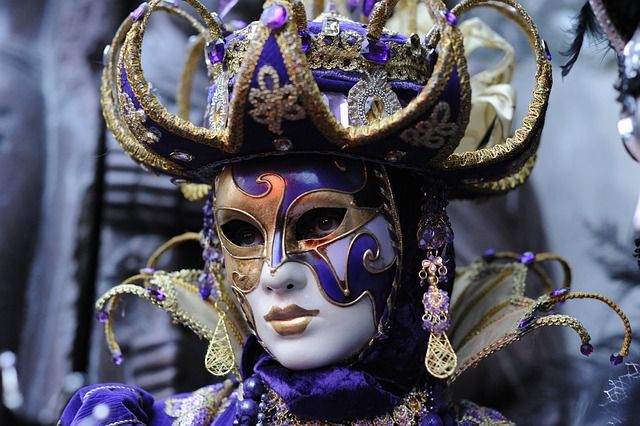
Carnival has a long and fascinating history that dates back to the 11th century. In fact, it was originally a time for celebration and indulgence before the start of the Christian season of Lent, a period of repentance. The carnival was a way for people to let loose and enjoy themselves before the austerity of Lent.
Over time, this period became more elaborate and sophisticated in Venice, with grand balls and parades featuring ornate Carnival costumes and masks.
The masks, in fact, allowed people to escape their social roles and class distinctions and allowed them to be someone else for a short period of time. They also were able to add an element of mystery and intrigue, as people were able to hide their identity and engage in activities that they might not normally do.
In the 18th and 19th centuries, Carnival became a major cultural event: people from all walks of life could come together and enjoy the festivities, and the costumes and masks became increasingly elaborate.
Additionally, it was also a time for people to showcase their wealth and social status, with the most ornate costumes reserved for the wealthy and influential.
Despite facing various challenges and setbacks over the years, it has continued to thrive and remains a beloved tradition in the city.
Today, it is an important part of the city's heritage and identity and attracts visitors from all over the world who come to experience the unique and unforgettable costumes and characters of the Venice Carnival.
The most famous costumes and masks of the Venice Carnival
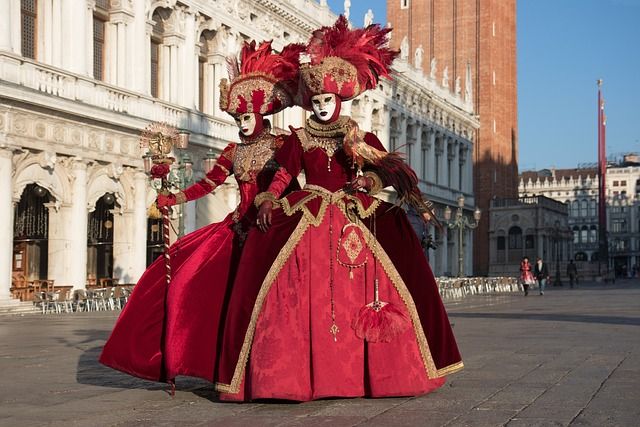
We have collected here some of the most famous and beautiful masks that color the city of Venice during Carnival.
Some of the most famous masks and characters are typical of Venice. Other masks, instead, are part of the Commedia dell'Arte, an early form of professional theater that spread out all over Italy between the 16th and 18th century.
Here follow some of the most famous Venice Carnival costumes and masks.
The famous Venetian carnival mask that also Casanova used to wear frequently
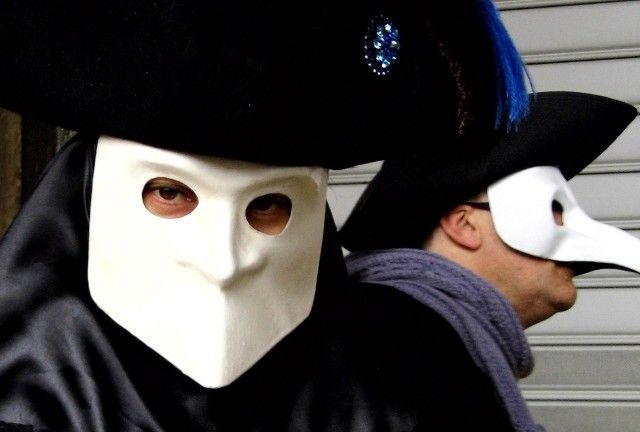
The bauta mask is a traditional Venetian mask that covers the entire face and is characterized by a white base and a large pointed nose. The mask is typically worn with a black cape and a tricorn hat.
The bauta mask has a long history and was originally worn by men of all social classes.
It was a popular choice for masqueraders because it allowed them to eat, drink, and speak freely without revealing their identity. The mask was also worn by politicians and public officials during official ceremonies and events.
Legends surrounding the bauta mask include the belief that it was worn by the famous Venetian adventurer Casanova to escape recognition and allow him to move freely about the city.
The mask that protects the identities of women
The Moretta mask is a traditional Venetian mask that is worn by women.
It is a small, oval-shaped mask that covers the face and is made of black velvet or leather. The mask is held in place by a button or a ribbon that is placed between the teeth, and it has no holes for the eyes, which means that the wearer must rely on touch and hearing to navigate.
The moretta mask was originally worn by women of high social standing, and it was considered a sign of modesty and virtue. The mask was worn to protect the wearer's identity and to discourage unwanted attention.
Legends surrounding the Moretta mask include the belief that it was worn by courtesans and ladies of the night to protect their identity and reputation.
One of the most scary Venetian Carnival costumes
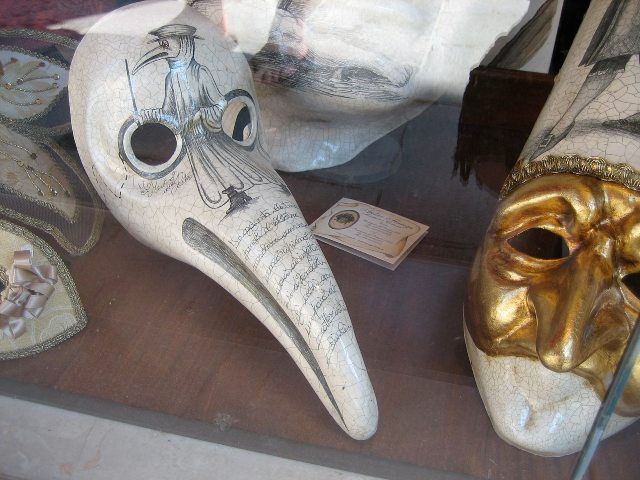
The Medico della Peste mask, also known as the Plague doctor mask, is a traditional mask that was worn by doctors and healthcare workers during times of plague and epidemic.
The mask is characterized by a long, pointed beak and round eyepieces that are made of glass. The mask is typically worn with a long, black cloak and a wide-brimmed hat.
The medico della peste mask was designed to protect the wearer from the diseases that they were treating. The long beak of the mask was filled with sweet-smelling herbs and spices, which were believed to purify the air and protect the wearer from the plague. The mask was also designed to protect the wearer's identity, as people were often afraid of coming into contact with plague victims.
Legend has it that the mask was worn by doctors and nurses who were bravely fighting the plague and risking their own lives to save others.
One of the most typical and colorful masks
It is a kind of clown in a multicolored suit. The Mattacino mask was once famous for throwing perfume-filled eggs using a kind of slingshot.
A real market was created around their figure for buying and selling the scented eggs, which were thrown at friends and relatives. Since women were often the target, the authorities decided to ban the throwing of scented eggs.
The figure of the Mattacino is widespread in many parts of Veneto and in some areas of the Alto Adige region.
The mask of Vice
The Bernardone mask shows a beggar dressed in a few filthy rags. He shows off the wounds and sores caused by a dissolute youth later marked by syphilis.
The "cat woman" mask
In the Venetian dialect, "Gnaga" comes from the mewing of the cat and was a very common disguise for homosexual youths who were forced to hide their sexual preferences throughout the rest of the year.
Young men would go around the Venetian calli or bridges meowing and carrying a basket with a kitten.
The mask from a distance looks like an ordinary housewife, but up close its transvestite nature is apparent.
It symbolizes the corruption and depravity of Venice in the last century of the Republic.
The masks of the Commedia dell'Arte
The mask of trickery and cleverness
The Colombina mask is a traditional Venetian mask that is shaped like a half-mask and covers the upper half of the face. The Colombina character is a clever servant and confidante of the character Arlecchino.
Legends surrounding the Colombina mask include the belief that it was worn by court jesters and tricksters who used their wit and charm to entertain and delight their audience.
The Mask of joy and laughter (but also pranks)
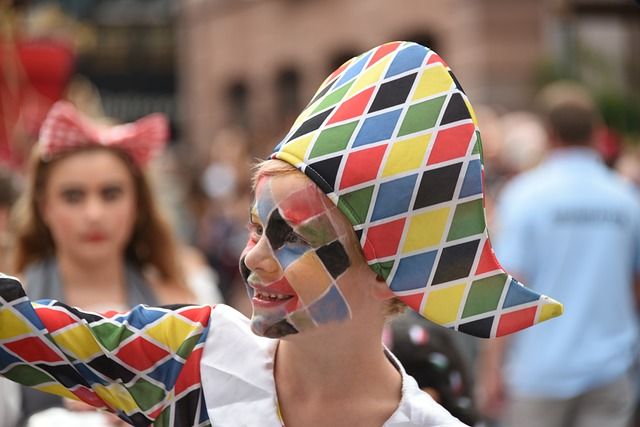
The Harlequin mask is a traditional Italian mask that was born in the city of Bergamo but was made popular in Venice by the playwright Carlo Goldoni.
The mask is typically made of fitted jacket and pants, with red, green, yellow, and blue triangles arranged in lozenges, completed by a black mask. On the feet there are shoes with a large bow, and on the head there is a felt hat decorated with a rabbit tail.
The character of Harlequin is a mischievous and cunning trickster who is known for his quick wit and clever pranks.
The mask of the rich and greedy merchant
The Pantalone mask is another traditional Venetian Carnival costume that is associated with the character of Pantalone from the Italian commedia dell'arte.
The mask is typically made of leather or velvet and is characterized by a large, hooked nose and bushy eyebrows. The mask is often worn with a costume that reflects the character of Pantalone, which is typically a red or purple outfit with a long coat and a hat or headpiece.
The character of Pantalone is a wealthy merchant who is known for his miserly and greedy ways. He is often portrayed as a stereotypical Italian merchant, and he is known for his love of money and his distrust of others.
Legends surrounding the Pantalone mask include the belief that it was worn by performers and entertainers who used the character of Pantalone to satirize the wealthy and powerful.
The witty mask that comes from Naples, Italy
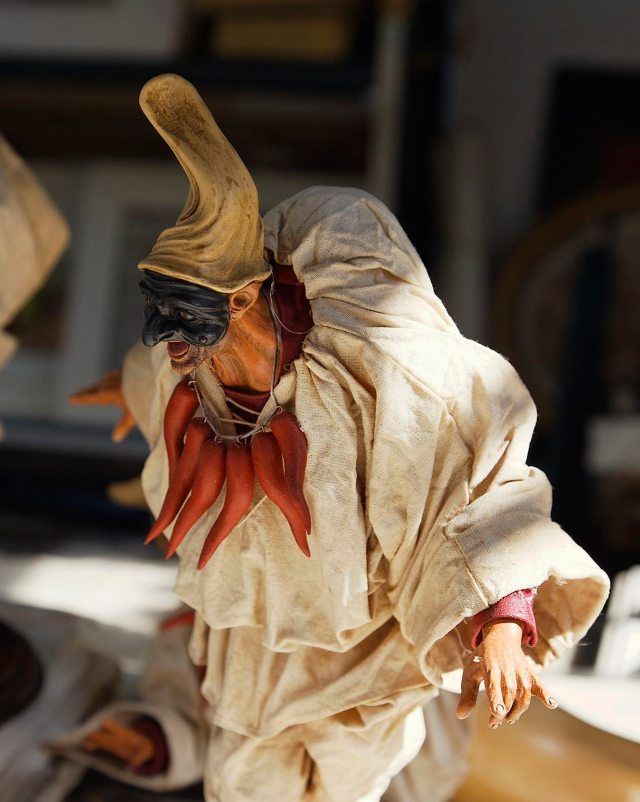
The Pulcinella mask is a traditional mask from Naples.
The mask is black and has a pointed nose and a round, while the costume is made up of a white outfit with a long coat and a hat or headpiece.
The character is a lovable and mischievous trickster who is known for his wit and humor. He is known for his clever schemes and ability to outsmart his masters.
Current state of the Venice Carnival costumes and characters
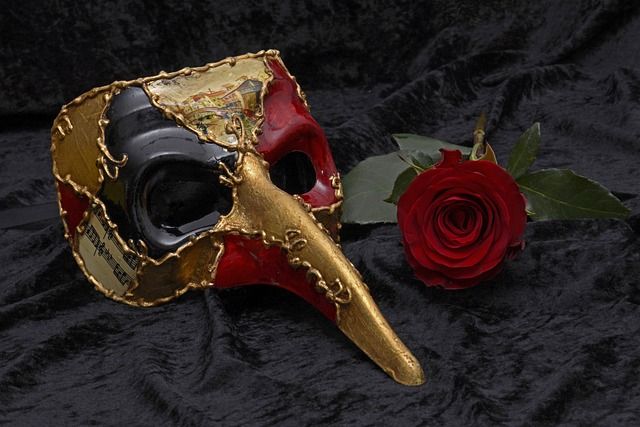
Carnival has undergone many changes over the years, and the costumes and characters have evolved along with it.
Traditional masks and costumes are highly prized and are often made by skilled artisans who use traditional techniques and materials. Despite the price, many tourists and Venetians still like renting and wearing costumes and masks and showing them during the Venetian Carnival.
In addition to the traditional masks and costumes, the Carnival has also seen the introduction of more modern and eclectic outfits and characters.
Many Carnival-goers now create their own costumes and masks, drawing inspiration from a wide range of sources including pop culture, movies, and video games. This has led to a more diverse and eclectic mix of costumes and characters at the carnival, and made it more accessible to a wider audience.
Despite these changes, this period remains a beloved tradition and an important part of the city's cultural identity. In fact, it is a time for people from all walks of life to come together and celebrate the unique and rich history of the city, and it continues to attract visitors from all over the world who are drawn to the spectacle and charm of the costumes and characters of the Carnival.
If you'd like to rent Venice Carnival costumes, have a look at our tips
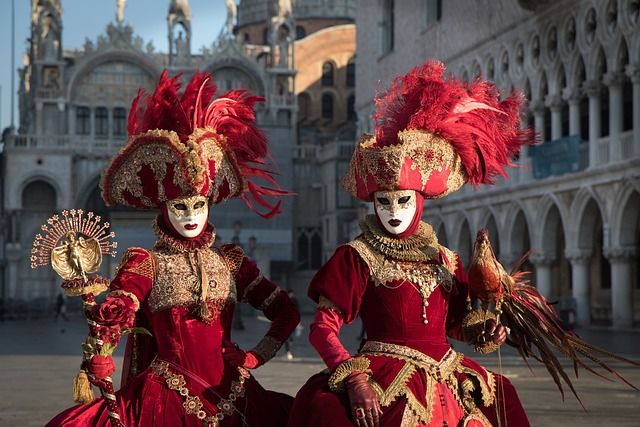
If you're planning to attend the Venice carnival and want to rent a costume, there are a few things to keep in mind to ensure that you have a positive and enjoyable experience.
First of all, start your search for a costume early, as the demand for costumes can be high and rental options may be limited. You can find rental options through various online platforms, as well as through local costume shops and rental companies in Venice.
When choosing a rental costume, be sure to consider the quality and authenticity of the costume. Some rental options may be mass-produced and not as high quality as others, so it's important to do your research and choose a reputable rental company. Additionally, be sure to try on your costume before the carnival to ensure that it fits properly and is comfortable to wear.
Finally, be prepared to pay a higher price for your rental costume, as the demand for costumes during the carnival is high and prices tend to be inflated.
However, with some careful planning and research, you can find a high-quality costume that will help you fully enjoy and experience the Venice carnival!

